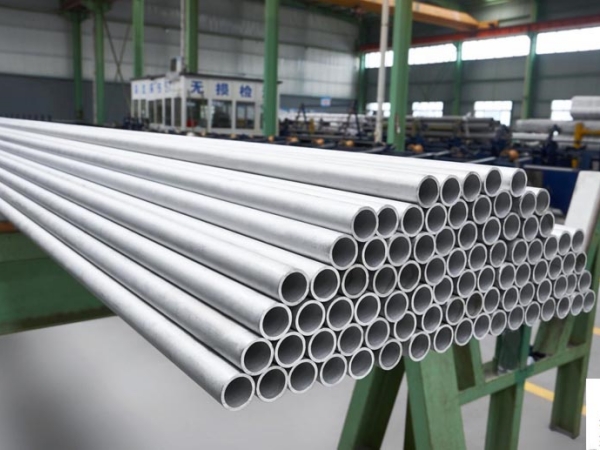Stainless steel seamless pipes are long strips of steel with hollow sections and no seams around them. Today, United Steel Industry will introduce you to knowledge about stainless steel seamless pipes.

Features of Stainless Steel Seamless Pipes:
1. The thicker the wall thickness of the product, the more economical and practical it is. The thinner the wall thickness, the higher the processing cost. Secondly, the product's process determines its limited performance. The precision of seamless steel pipes is low: the wall thickness is uneven, the brightness inside and outside the pipe is low, the cost of cutting to length is high, and pitting and black spots on the inner and outer surfaces are difficult to remove; thirdly, its detection and shaping must be processed offline. Therefore, it reflects its superiority in high pressure, high strength, and mechanical structural materials.
Types of Stainless Steel Seamless Pipes:
The rolling methods are divided into hot rolling, hot extrusion and cold drawn (rolled) stainless steel pipes. According to the metallographic struct··ure of stainless steel, it is divided into semi-ferritic and semi-martensitic stainless steel pipes, martensitic stainless steel pipes, austenitic stainless steel pipes, and austenitic-ferritic iron stainless steel pipes.
Specifications and Appearance Quality Stainless Steel Seamless Pipes:
A. According to GB14975-94 "Stainless Steel Seamless Steel Pipe", the normal length of hot-rolled steel pipe (unshaped) is 1.5~10m, and the hot-extruded steel pipe is equal to or greater than 1m. Cold drawn (rolled) steel pipe wall thickness is 0.5~1.0mm, 1.0~7m; wall thickness is greater than 1.0mm, 1.5~8m.
B. There are 45 types of hot-rolled (hot-extruded) steel pipes, with diameters ranging from 54 to 480 mm and wall thicknesses ranging from 4.5 to 45 mm, a total of 36 types. There are 65 types of cold-drawn (rolled) steel pipes with diameters ranging from 6 to 200 mm, and 39 types with wall thicknesses ranging from 0.5 to 21 mm.
C. There should be no defects such as cracks, folds, cracks, cracks, curling, separation layers and crusting on the inner and outer surfaces of the steel pipe. These defects should be completely removed (except for machined pipes) and the wall thickness and outer wall should not be removed after removal. Diameter exceeds negative deviation. Other minor surface defects that do not exceed the allowable negative deviation may not be removed.
D. Allowable depth for straight roads. Hot-rolled and hot-extruded steel pipes, the diameter is not less than or equal to 140mm and not more than 5% of the nominal wall thickness, the maximum depth is not more than 0.5mm; the cold-drawn (rolled) steel pipe is not more than 4% of the nominal wall thickness, the maximum depth is not more than 0.3 mm.
E. Both ends of the steel pipe should be cut at right angles and burrs should be removed.